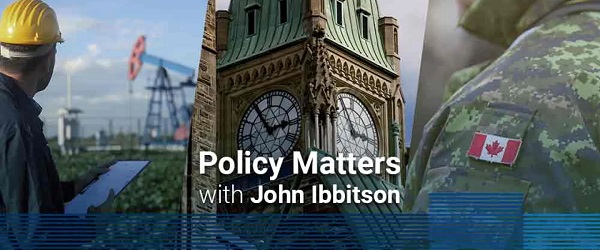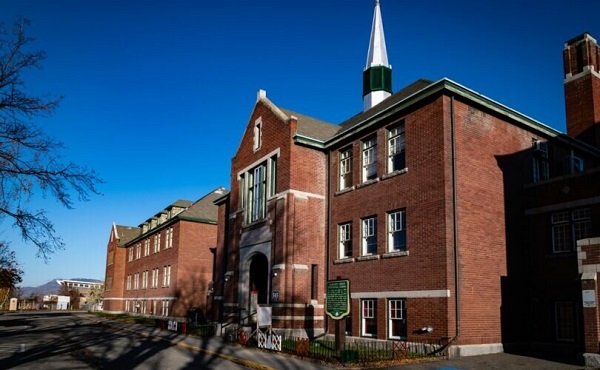Business
Paul Almeida: My European Favourites in 5 – 4 – 3 – 2 – 1!

Salzburg, Austria by Paul Almeida
Salzburg is one of my favourite mid-sized cities in Europe and Austria’s fourth largest city, with only about 150,000 residents. Geographically, it lies at the foot of the Eastern Alps, close to the German border and is bisected by the Salzach River. The compact old town, with medieval and baroque architecture is classified as a UNESCO World Heritage Site and is easy to explore on foot. Salzburg is visited annually by millions of tourists from around the world and our Azorcan tour groups often list it as a favourite stop.

Salzburg, Austria
5 FUN FACTS
Salzburg literally means “Salt Fortress.” The reigning Prince-Archbishops, the city and the region became wealthy mainly from the salt mines in the area, trade and some gold mining. Don’t miss the opportunity to visit a salt mine in the area to learn more about the extraction of the “white gold.”
The 11th century Hohensalzburg is one of the largest and best preserved medieval fortresses in Europe. You can walk up the path to the fortress or you can take the Festungsbahn funicular railway located just off the Kapitelplatz. From the fortress, you can enjoy some of the best views of the city and the surrounding area.
Composer Wolfgang Amadeus Mozart was born on January 27, 1756 in Salzburg, and you can visit his birthplace which is also a museum. You can’t miss the bright yellow building at No. 9 Getreidegasse with “Mozart’s Gebursthaus” in gold letters on the façade. The Getreidegasse is a pedestrian street with shops and restaurants. The ornamental wrought iron signs on the building facades harken back to medieval times. The Schlosserei Wieber shop on the Getreidegasse is a traditional metalworking shop that also continues to make these signs. The city celebrates Mozart Week festival in January around his birthday. A friend once joked that “Mozart was my favourite composer, now he’s my favourite decomposer.”

Hohensalzburg Fortress, Mozart’s Gebursthaus and the metal signs on the Getreidegasse
The famous Salzburg Festival, established in 1920 and which features some of Mozart’s works, is held each summer for five weeks starting in late July. With approximately two hundred drama, concert, and opera events and a quarter of a million visitors, it is a huge undertaking and an important driver of the local economy. The festival celebrated its 200th anniversary in 2020 but unfortunately plans had to be scaled back due to the corona virus pandemic.
The Rodgers and Hammerstein musical, “The Sound of Music,” about the Von Trapp family was set in Salzburg and movie fans love to search out film locations in the city.
Some of the most popular places to seek out are St. Peter’s cemetery, the Mirabell Palace and gardens with the Pegasus fountain, the Horse Pond, the Residence Square with it’s baroque fountain, Schloss Leopoldskron and the Nonnberg Abbey. The Rock Riding School, which was initially built to be a cathedral but was changed to a riding school by the Prince-Archbishop, later became Salzburg’s favourite concert venue. This is where the real Von Trapp family won the 1936 Salzburg Music Festival. There are other film locations located in the surrounding areas and there are tours that focus on the Von Trapp’s and the movie.

Mirabell Gardens, Makartsteg Bridge and the view of the old town from the Mochsberg
4 POINTS OF INTEREST
A walking tour of Salzburg usually starts at the Mirabell Palace gardens. The Palace was built by a Prince-Archbishop in 1606 and has a grand marble hall that is popular for weddings. The view from the palace’s gardens to the Hohensalzburg fortress in the summer when the geometrically laid flowers are in bloom is amazing. The Grand Fountain in the centre of the garden with four mythological statues representing the elements (Fire, Air, Earth, Water), the Dwarf Garden, and the Pegasus Fountain are popular photo stops. The best way to cross the Salzach river to the old town from the Mirabell gardens is the pedestrian Makartsteg Bridge which is usually adorned with numerous “love locks.” The locks are inscribed with the lovers initials, attached to the fencing and the key thrown into the Salzach.
As you cross the river to the old town (Altstadt), go to the right and you will find the Monchsberg lift which takes you up to the Museum of Modern Art (Museum der Moderne). The café at the museum is a great place to have a cappuccino and cheese strudel as you admire the view of the old town. The Monchsberg, which was named after the Benedictine monks, is one of five mountains or hills in Salzburg. The Monchsberg plateau has a hiking path through the forest that you can take and enjoy scenic views all the way to the Hohensalzburg fortress. The city has a mountain inspector’s office (Bergputzer) to check the mountain for possible falling rocks. In 1669, an avalanche of rock landed on the city below and killed over 200 people.
On the University Square (Universitatplatz), you will find the Grünmarkt or green
Market that goes back to the 18th century. The farmers market still has vendors selling fruit, vegetables, cheeses, meats, breads and pastries. It’s a great place to sample local products, or grab a quick lunch or a pretzel. The Kollegienkirche or University church dominates the square, and there are several historic buildings surrounding the lively square.

Pretzel kiosk on University Square, Residence Square and the Salzburg Cathedral>
A short walk from the University Square will take you past the Alter Markt square with the St. Florian Fountain and into the expansive Residence Square (Residenzplatz). The square has a magnificent baroque fountain decorated with four horses snorting water, giants, dolphins and a triton. Here is where you can find horse drawn carriages to enjoy the city centre at a leisurely pace. The Residence museum on the square is a testament to the immense wealth and political power of the Prince-Archbishop’s of Salzburg. The lavish state rooms and painting collection make it a top attraction. The 17th century baroque Salzburg Cathedral or Dom on the square is connected to the Residence. The Cathedral has religious relics of St. Rupert, an impressive pipe organ, plus an ornate ceiling and dome. The baptismal font is the same one used to baptize Mozart.
3 INTERESTING ACTIVITIES
To fully understand the significance of salt to the fortunes of Salzburg take a short trip to the Salzbergwerk Dürrnberg, which is located on the Dürrnberg above the town of Hallein. After supplying you with miner’s overalls, you will go by rail deep into the mountain where you will walk through the tunnels, go down two long slides and take a raft trip across an underground salt lake. The very informative tour explains the history of the mine from the age of the Celts to modern mining methods. After the tour be sure to visit the SALINA Celtic village to see how life was 2,600 years ago.
The Red Bull Hanger 7 at the Salzburg Airport is an impressive glass structure that houses the Flying Bulls historical airplane and helicopter fleet plus a collection of Formula 1 race cars. Austrian Red Bull founder and billionaire Dietrich Mateschitz is the owner of the hanger and the collection. If you like cars or planes, this is a must stop when you visit Salzburg or have a layover at the airport.

Going into the Salt Mine, a Red Bull concept race car and inside the Hanger 7
The imposing 900 year old medieval Hohenwerfen Castle, surrounded by the Berchtesgaden Alps, is located about 40 km south of Salzburg and overlooks the town of Werfen. A funicular takes you from the parking area up to the castle’s interior courtyard. The castle has an extensive weapons exhibit. The main event is a birds of prey demonstration from the Salzburg Falconry Center in the exterior courtyard with falcons, kites, vultures, and eagles. Some of these birds are huge and have no problem walking amongst the spectators. Be sure to check the daily times of the demonstrations in advance.

The impressive Hohenwerfen Castle, the courtyard and a large eagle
2 LOCAL DISHES TO ORDER
Tafelspitz is a popular Austrian dish of veal and vegetables that is simmered slowly. The broth is served separately as a first course then the veal and root vegetables are accompanied by apple-horsradish and chives.
Salzburger Nockerl was invented in Salzburg in the 17th century. Nockerl are vanilla flavoured dumplings dusted with powdered sugar and served with fruit jams or sauces. The warm dumplings arrive in three mounds to represent the three hills that surround Salzburg.

A Salzburger Nockerl, the Augustiner Brewery and their beer gardens
1 BEVERAGE TO ENJOY
There are eleven breweries in Salzburg, and the city is known as Austria’s beer capital. The Stiegl brewery has been privately owned since 1492. The Stieglkeller, located below the Hohensalzburg fortress, is a restaurant and beer garden that offers great views of the old town.
Established in 1621, the Augustiner Brau brewery and tavern is the biggest in Austria with indoor seating and a beer garden. In addition to great beer, you can purchase traditional dishes from food stands located inside the hall or the brewery.
Salzburg is a university town and has a lively café, beer garden and nightlife scene.
In addition to Mozart Week and the Salzburg Music Festival locals celebrate Fasching, Easter and harvest festivals. Salzburg’s Christmas markets are very popular and some shops in the old town specialize in Christmas.
Paul Almeida is the President of Azorcan Global Sport, School and Sightseeing tours and his company has taken thousands of people to Europe on custom group tours since 1994.
Visit azorcan.net to see all our custom group tour possibilities and to see our signature sport, sightseeing and sport fan tours individuals can now join.
Check out our newsletters, and listen to our podcasts at azorcan.net/media
Images compliments of Paul Almeida and Azorcan Tours.
Read more on Todayville.
Business
Most Canadians say retaliatory tariffs on American goods contribute to raising the price of essential goods at home

- 77 per cent say Canada’s tariffs on U.S. products increase the price of consumer goods
- 72 per cent say that their current tax bill hurts their standard of living
A new MEI-Ipsos poll published this morning reveals a clear disconnect between Ottawa’s high-tax, high-spending approach and Canadians’ level of satisfaction.
“Canadians are not on board with Ottawa’s fiscal path,” says Samantha Dagres, communications manager at the MEI. “From housing to trade policy, Canadians feel they’re being squeezed by a government that is increasingly an impediment to their standard of living.”
More than half of Canadians (54 per cent) say Ottawa is spending too much, while only six per cent think it is spending too little.
A majority (54 per cent) also do not believe federal dollars are being effectively allocated to address Canada’s most important issues, and a similar proportion (55 per cent) are dissatisfied with the transparency and accountability in the government’s spending practices.
As for their own tax bills, Canadians are equally skeptical. Two-thirds (67 per cent) say they pay too much income tax, and about half say they do not receive good value in return.
Provincial governments fared even worse. A majority of Canadians say they receive poor value for the taxes they pay provincially. In Quebec, nearly two-thirds (64 per cent) of respondents say they are not getting their money’s worth from the provincial government.
Not coincidentally, Quebecers face the highest marginal tax rates in North America.
On the question of Canada’s response to the U.S. trade dispute, nearly eight in 10 Canadians (77 per cent) agree that Ottawa’s retaliatory tariffs on American products are driving up the cost of everyday goods.
“Canadians understand that tariffs are just another form of taxation, and that they are the ones footing the bill for any political posturing,” adds Ms. Dagres. “Ottawa should favour unilateral tariff reduction and increased trade with other nations, as opposed to retaliatory tariffs that heap more costs onto Canadian consumers and businesses.”
On the issue of housing, 74 per cent of respondents believe that taxes on new construction contribute directly to unaffordability.
All of this dissatisfaction culminates in 72 per cent of Canadians saying their overall tax burden is reducing their standard of living.
“Taxpayers are not just ATMs for government – and if they are going to pay such exorbitant taxes, you’d think the least they could expect is good service in return,” says Ms. Dagres. “Canadians are increasingly distrustful of a government that believes every problem can be solved with higher taxes.”
A sample of 1,020 Canadians 18 years of age and older was polled between June 17 and 23, 2025. The results are accurate to within ± 3.8 percentage points, 19 times out of 20.
The results of the MEI-Ipsos poll are available here.
* * *
The MEI is an independent public policy think tank with offices in Montreal, Ottawa, and Calgary. Through its publications, media appearances, and advisory services to policymakers, the MEI stimulates public policy debate and reforms based on sound economics and entrepreneurship.
Business
B.C. premier wants a private pipeline—here’s how you make that happen

From the Fraser Institute
By Julio Mejía and Elmira Aliakbari
At the federal level, the Carney government should scrap several Trudeau-era policies including Bill C-69 (which introduced vague criteria into energy project assessments including the effects on the “intersection of sex and gender with other identity factors”)
The Eby government has left the door (slightly) open to Alberta’s proposed pipeline to the British Columbia’s northern coast. Premier David Eby said he isn’t opposed to a new pipeline that would expand access to Asian markets—but he does not want government to pay for it. That’s a fair condition. But to attract private investment for pipelines and other projects, both the Eby government and the Carney government must reform the regulatory environment.
First, some background.
Trump’s tariffs against Canadian products underscore the risks of heavily relying on the United States as the primary destination for our oil and gas—Canada’s main exports. In 2024, nearly 96 per cent of oil exports and virtually all natural gas exports went to our southern neighbour. Clearly, Canada must diversify our energy export markets. Expanded pipelines to transport oil and gas, mostly produced in the Prairies, to coastal terminals would allow Canada’s energy sector to find new customers in Asia and Europe and become less reliant on the U.S. In fact, following the completion of the Trans Mountain Pipeline expansion between Alberta and B.C. in May 2024, exports to non-U.S. destinations increased by almost 60 per cent.
However, Canada’s uncompetitive regulatory environment continues to create uncertainty and deter investment in the energy sector. According to a 2023 survey of oil and gas investors, 68 per cent of respondents said uncertainty over environmental regulations deters investment in Canada compared to only 41 per cent of respondents for the U.S. And 59 per cent said the cost of regulatory compliance deters investment compared to 42 per cent in the U.S.
When looking at B.C. specifically, investor perceptions are even worse. Nearly 93 per cent of respondents for the province said uncertainty over environmental regulations deters investment while 92 per cent of respondents said uncertainty over protected lands deters investment. Among all Canadian jurisdictions included in the survey, investors said B.C. has the greatest barriers to investment.
How can policymakers help make B.C. more attractive to investment?
At the federal level, the Carney government should scrap several Trudeau-era policies including Bill C-69 (which introduced vague criteria into energy project assessments including the effects on the “intersection of sex and gender with other identity factors”), Bill C-48 (which effectively banned large oil tankers off B.C.’s northern coast, limiting access to Asian markets), and the proposed cap on greenhouse gas (GHG) emissions in the oil and gas sector (which will likely lead to a reduction in oil and gas production, decreasing the need for new infrastructure and, in turn, deterring investment in the energy sector).
At the provincial level, the Eby government should abandon its latest GHG reduction targets, which discourage investment in the energy sector. Indeed, in 2023 provincial regulators rejected a proposal from FortisBC, the province’s main natural gas provider, because it did not align with the Eby government’s emission-reduction targets.
Premier Eby is right—private investment should develop energy infrastructure. But to attract that investment, the province must have clear, predictable and competitive regulations, which balance environmental protection with the need for investment, jobs and widespread prosperity. To make B.C. and Canada a more appealing destination for investment, both federal and provincial governments must remove the regulatory barriers that keep capital away.
-

 COVID-194 hours ago
COVID-194 hours agoFDA requires new warning on mRNA COVID shots due to heart damage in young men
-

 Business2 hours ago
Business2 hours agoCarney’s new agenda faces old Canadian problems
-

 Indigenous3 hours ago
Indigenous3 hours agoInternal emails show Canadian gov’t doubted ‘mass graves’ narrative but went along with it
-

 Bruce Dowbiggin5 hours ago
Bruce Dowbiggin5 hours agoEau Canada! Join Us In An Inclusive New National Anthem
-

 Bruce Dowbiggin2 days ago
Bruce Dowbiggin2 days agoThe Covid 19 Disaster: When Do We Get The Apologies?
-

 Media2 days ago
Media2 days agoCBC journalist quits, accuses outlet of anti-Conservative bias and censorship
-

 Business2 days ago
Business2 days agoCarney government should recognize that private sector drives Canada’s economy
-

 Alberta2 days ago
Alberta2 days agoFourteen regional advisory councils will shape health care planning and delivery in Alberta







